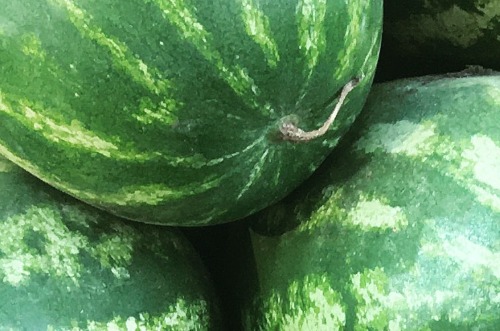W35: Watermelon Update

In W35 in the watermelon landscape, Mundo Novo, a municipality in Goiás, Brazil, is seeking recognition to export watermelons with the support of the Goiás Agricultural Defense Agency (Agrodefesa). Goiás is the third-largest watermelon producer in Brazil and ranks eighth in terms of exports. The supervision aims to ensure compliance with phytosanitary surveys to combat the pest Anastrepha grandis in watermelon crops. This effort is aimed at inclusion in the Risk Mitigation System (SMR), allowing the export of fresh cucurbit fruits to countries with quarantine restrictions. As of W35, 16 municipalities in Goiás have permission to export watermelons. The process involves conducting phytosanitary surveys on cucurbit crops for six months by qualified technicians. After this period, the data is compiled and submitted to the Ministry of Agriculture (Mapa) for official recognition in the SMR. Watermelon production is vital for Goiás, Brazil’s third largest watermelon producer, with an annual output of over 227 thousand tons and an average productivity of 41.3 tons per hectare (ha).
The Saratov region in Russia has commenced its watermelon harvest, with farms in the Rivne municipal district starting to gather the new crop. The Deputy Chairman of the Regional Minister of Agriculture reported a yield of 1.35 thousand tons from 4.9 thousand ha of melon and gourd cultivation in the region. Furthermore, seaside melon growers in three municipalities of Primorsky Krai, Russia, harvested part of their watermelon crop before the heavy rains and typhoons. In 2023, the watermelon harvest totaled 251 tons, while 180 ha of melon fields remained unharvested, including in the watermelon capital of Primorye, the Spassky municipal district. Due to the severe weather conditions, a state of emergency was declared at the federal level in Primorye. Municipal commissions are assessing the extent of agricultural land affected by the floods. The Minister of Agriculture for the region has assured farmers that they will be compensated for crop losses, lost feed, and material assets.
On August 30, the watermelon market of Castilla-La Mancha, Spain, witnessed a significant price drop across all categories of watermelons. Seedless black watermelons went from being priced between USD 0.22 to 0.25 per kilogram (kg) to USD 0.17 to 0.20/kg. Similar price reductions were observed in black watermelons and various categories of white watermelons.
Lastly, Morocco's watermelon exports to Spain have dropped significantly in the first half of 2023, declining by almost 50%. During this period, Spain imported only 53.5 million kgs of watermelons from Morocco, compared to 106.8 million kgs in the previous year. Despite the reduced exports, Morocco remains the top supplier of watermelons to the Spanish market. Senegal ranks second, with 19.34 million kgs imported, followed by Mauritania as the third-largest supplier. Watermelon production in Morocco faces increased research due to concerns about dwindling water resources, with calls for government intervention to halt production. In Sept-22, Morocco ended irrigation subsidies in response to online campaigns and demands from environmental associations to discontinue watermelon cultivation.






